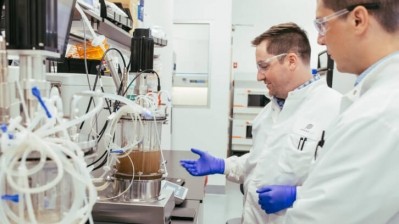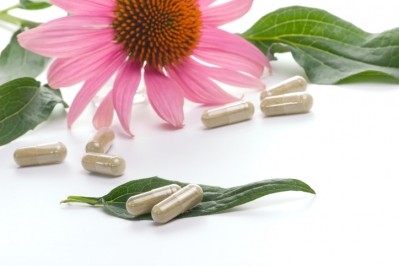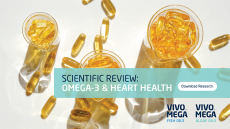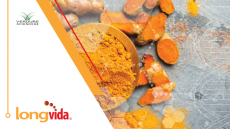Ayana Bio targets cacao bioactives production, ‘upgrades’ plant cell culture with synthetic biology and metabolomics
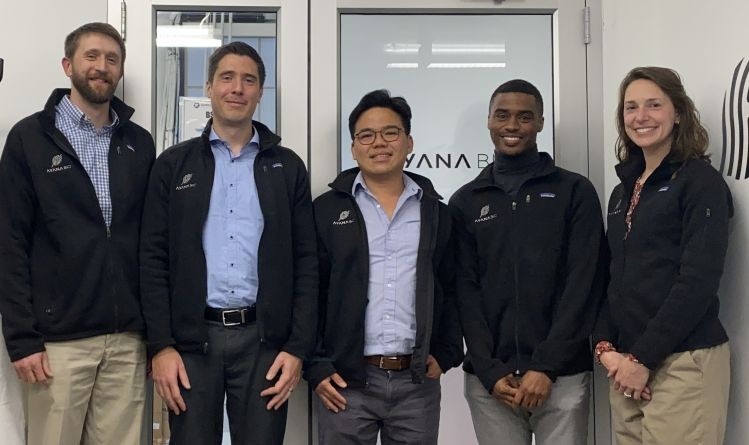
While ‘precision fermentation’ firms deploy synthetic biology to program microbes such as yeast or bacteria to produce everything from collagen to ‘animal-free’ whey proteins, Ayana Bio grows plant cell lines in bioreactors to produce high-value bioactives that cannot easily be expressed by microbes or where it’s too expensive or impractical to extract them from fully-grown plants.
A spinoff from synthetic biology specialist Ginkgo Bioworks, which brought in botanicals industry veteran Frank Jaksch as CEO last summer, Ayana Bio is exploring a variety of health-promoting components found in saffron, ginseng, ginger, berries, and echinacea and expects its first cacao bioactives to be ready for commercialization in late 2024.
‘We’re encouraging others to work with us to essentially fix a number of issues around cacao agriculture’
Although it’s not the only plant cell culture co working with cacao (a space California Cultured, Celleste Bio, and others are also playing in), Ayana Bio is focused exclusively on mining high-value ingredients such as cacao polyphenols that could support digestion, heart health, cognition, and immunity while reducing the risk of inflammation and diabetes, rather than getting into the chocolate confectionery market, CTO and co-founder Effendi Leonard told FoodNavigator-USA.
“The question we asked was can we use our technology to scale up these bioactives and at the same time generate data that could be useful for cacao agriculture as a whole?
“So what Ayana Bio is going after are the genetics, transcript, and metabolomic profiles for improving cacao bioactive production. But while we're profiling all the cacao varieties out here, we are also going to be reading the underlying reasons for disease resistance, drought tolerance, and so on, which are not part of our business.
“So the thinking is, not only will Ayana benefit from this exercise, but potentially others will benefit from a lot of the genome and metabolomics information, so we’re encouraging others to work with us to essentially fix a number of issues around cacao agriculture.”
Asked how this would work in practice, he said: “We haven't really thought through the mechanism to share this yet, but I imagine it will be some sort of database, so we’ll need collaborators.”

‘We can upgrade plant cell culture technology using advances in synthetic biology and metabolic engineering’
To those wondering how plant cell culture works in practice, he said, “What we're trying to do is cultivate a piece of plant — a callus or cell line — in a bioreactor, but that piece of plant no longer requires inputs such as sunlight.
“We feed it sugar and micronutrients, and then we harvest the biomass or the callus that has propagated and then extract what we want from that.”
This technology is not new, clarified Leonard, who notes that breast cancer drug Taxol contains a substance found in the bark of the Pacific yew tree that is now made commercially from plant cell culture.
“What's new here is what can we do to essentially upgrade that technology using advances in synthetic biology and metabolic engineering; that is the game changer.”
‘We read genetics, but we also read the compounds that are being biosynthesized within cells’
According to Leonard: “Genome sequencing efforts have advanced dramatically in a way that is very efficient and clean in terms of the data that it produces and in terms of the costs. So this enables us to do a lot more genome sequencing and profile the genetics behind cacao plant cells.
“But we don't stop there. What we're trying to push for is to do other omics profiling, such as metabolomic. In other words, we read genetics, but we also read the compounds that are being biosynthesized within cells.
“And with the advances in technology, including computation, we have this mass of data [such that] we can link genetic profiles to metabolite profiles.”
Is plant cell culture scalable?
Asked how scalable plant cell culture is for high-value nutraceuticals, he said, “Being able to select particular cell lines that fit commercial performance metrics is really important when you're thinking about using plant cell technology for the purpose of creating small molecules, so the titer [yield of target substance] is high and the residence time [how long it takes before there’s material to harvest] is relatively short.”
Ayana has the “capability to reprogram a plant cell, so we have the capability to do genetic engineering in plant cells,” he noted. “However, the advantage of synthetic biology here is enabling us to select a particular cell line that is superior for the purpose of commercial production.
“We’re utilizing synthetic biology to read the different kinds of plant cells, therefore, getting us to the end point faster. And more importantly, by knowing the underlying genetics and metabolomics behind a trait improvement, we can selectively target specific genetics for trait improvement, so it’s not so much about the ability to do genetic engineering, but rather, the ability to select a better version of plant cells.”

The business model at Ayana Bio
Asked about the business model at Ayana Bio, which launched in September 2021 with $30m in Series A funding from Viking Global Investors and Cascade Investment, he said, “We have a number of business models but at a high level Ayana is making ingredients we’ll deliver to other companies. However, for a number of our ingredients, we’ll partner on development efforts.”
For manufacturing, he said, “In the short term, we’ll rely on toll manufacturing, and prior to us having our own facility, we’ll work with others to develop a process that can [later] be dropped in when we handle manufacturing ourselves.”
As to what kinds of companies Ayana might partner with, he said, “Anybody who utilizes botanical ingredients would be a good partner.”
‘People are jumping into plant cell culture because… as much as precision fermentation is a great tool, it will never reproduce anywhere close to the phyto-complex that a plant would produce’
So where does it make sense to use plant cell culture vs microbial fermentation?
According to Leonard: “I came from a background of precision fermentation, using microbes to produce single compounds. But the reality is, if you’re in the health and wellness business, it is very, very rare that a particular product application constitutes a single compound, it is typically a blend of many.
“People are jumping into the plant cell culture space because they are starting to realize that as much as precision fermentation is a great tool, it will never reproduce anywhere close to the phyto-complex that a plant would produce.”
‘No one would be able to guess a priori which part of the plant is most useful for developing certain bioactives’
So, which parts of the plant do you need to culture in order to produce the high-value components of interest?
It’s not as obvious as you might think, said Leonard: “No one would be able to guess a priori which part of the plant is most useful for developing certain bioactives. We typically start from harvesting all kinds of plant tissues that we can get our hands on and develop cell lines from those tissues. We would then use advances in omics to help us better understand which particular cell line is best for our purposes.
“We start from a number of different cultivars and varieties as the original sources of the cell line and then we add on top of that different tissues or different parts of the plants from each cultivar to develop cell lines. But there needs to be a way to select particular cell lines that are best for your purposes because there’s so much starting material.
“Our partnership with Ginkgo BioWorks enables this high throughput and massive profiling of a number of different cells for commercial purposes.”
